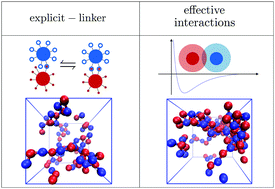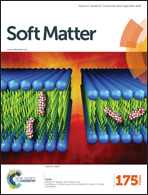Bond formation kinetics affects self-assembly directed by ligand–receptor interactions†
Abstract
In this paper we study aggregation kinetics in systems of particles functionalised by complementary linkers. Most of the coarse-grained models currently employed to study large-scale self-assembly of these systems rely on effective potentials between particles as calculated using equilibrium statistical mechanics. In these approaches the kinetic aspects underlying the formation of inter-particle linkages are neglected. We show how the rate at which supramolecular linkages form drastically changes the self-assembly pathway. In order to do this we develop a method that combines Brownian dynamics simulations with a Gillespie algorithm accounting for the evolution of inter-particle linkages. If compared with dynamics based on effective potentials, an explicit description of inter-particle linkages results in aggregates that in the early stages of self-assembly have a lower valency. Relaxation towards equilibrium is hampered by the time required to break existing linkages within one cluster and to reorient them toward free particles. This effect is more important at low temperature and high particle diffusion constant. Our results highlight the importance of including kinetic rates into coarse-grained descriptions of ligand–receptor systems.



 Please wait while we load your content...
Please wait while we load your content...